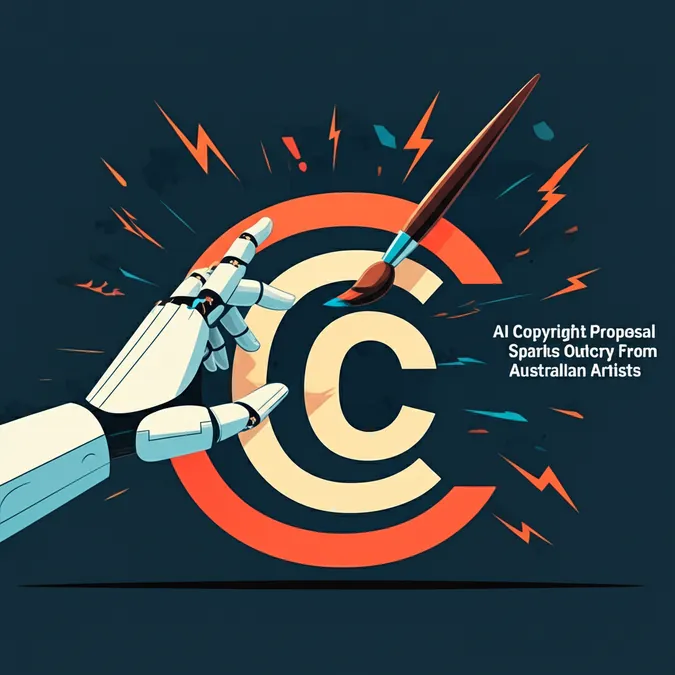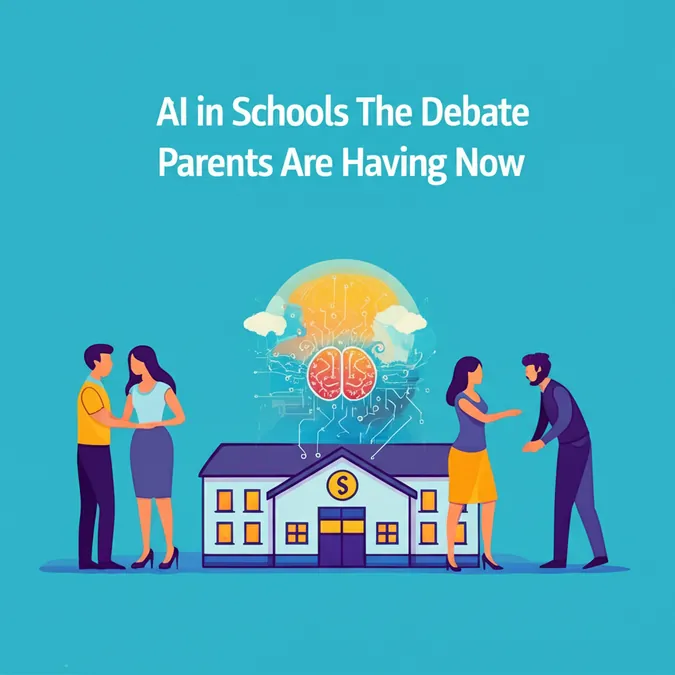Your Essential Guide to Modern AI Terminology
Artificial intelligence is rapidly changing our world. It's a technology that is already influencing the job market and filling the internet with low-quality content often called "slop." From the huge success of tools like ChatGPT to Google placing AI summaries at the top of its search results, AI is becoming a dominant force online. With AI, you can get instant answers to almost any question, making it feel like you're talking to an expert in every field.
But AI chatbots are just one piece of the puzzle. While it's fun to have ChatGPT help with homework or use Midjourney to create amazing images, the true potential of generative AI could fundamentally reshape our economies. According to the McKinsey Global Institute, this technology could add up to $4.4 trillion to the global economy every year. This is why you'll be hearing about artificial intelligence more and more.

It's appearing in countless products, including Google's Gemini, Microsoft's Copilot, Anthropic's Claude, and the Perplexity search engine. You can find reviews, news, and how-to guides for these and more at the AI Atlas hub.
As AI becomes more integrated into our lives, a new vocabulary is emerging. Whether you want to stay informed or impress your colleagues, here are the essential AI terms you need to know. This glossary is updated regularly to keep you current.
Core AI Principles and Types
artificial general intelligence, or AGI: A theoretical, advanced form of AI that can outperform humans at most tasks and can teach itself to improve its own abilities.
artificial intelligence, or AI: The field of computer science focused on creating technology that simulates human intelligence, enabling systems to perform tasks that typically require human intellect.
cognitive computing: Another term for artificial intelligence.
generative AI: Technology that uses AI to create new content, such as text, images, video, or code. It learns from large amounts of training data to identify patterns and generate original outputs.
machine learning, or ML: A subset of AI that allows computers to learn from data and improve their predictive accuracy without being explicitly programmed for every task.
multimodal AI: A type of AI capable of processing and understanding multiple types of data inputs at once, including text, images, speech, and video.
weak AI, aka narrow AI: AI that is designed and trained for a specific task. It cannot learn or perform beyond its designated skill set. The vast majority of AI in use today is narrow AI.
The Mechanics: How AI Learns and Works
algorithm: A set of rules or instructions that a computer program follows to analyze data, learn from it, and accomplish tasks on its own, such as by recognizing patterns.
dataset: A collection of information, like text or images, used to train, test, and validate an AI model.
deep learning: A subfield of machine learning that uses multi-layered artificial neural networks to find complex patterns in data like images, sound, and text.
diffusion: A machine learning technique where a model is trained to restore an original piece of data (like a photo) after random noise has been added to it.
end-to-end learning, or E2E: A deep learning method where a model is trained to perform an entire task from start to finish, rather than learning sequential steps. It learns directly from the input to produce the final output.
generative adversarial networks, or GANs: An AI model with two competing neural networks: a generator that creates new content and a discriminator that evaluates its authenticity.
inference: The process an AI model uses to generate new content by applying what it learned from its training data to new prompts or inputs.
large language model, or LLM: An AI model trained on massive amounts of text data to understand and generate human-like language.
natural language processing: A branch of AI that combines machine learning and linguistics to enable computers to understand and interpret human language.
neural network: A computational model, inspired by the structure of the human brain, that consists of interconnected nodes designed to recognize patterns in data and learn over time.
overfitting: An error in machine learning where a model learns its training data too well, to the point that it struggles to make accurate predictions on new, unseen data.
parameters: The numerical values within a large language model that define its structure and behavior, allowing it to make predictions.
quantization: A process that makes an LLM smaller and more efficient by reducing its numerical precision. It's like comparing a 16-megapixel image to an 8-megapixel one; both are clear, but the higher-resolution version has more fine detail.
synthetic data: Data created by generative AI, rather than collected from the real world. It's used to train and test machine learning models.
tokens: The small units of text that AI language models process. One token is roughly equivalent to four characters or about three-quarters of a word in English.
training data: The collection of datasets (text, images, code, etc.) used to teach an AI model.
transformer model: A deep learning architecture that learns context and relationships in data by analyzing entire sequences at once, like a full sentence, rather than word by word.
unsupervised learning: A type of machine learning where the model is not given labeled data and must find patterns and structures on its own.
zero-shot learning: A test of a model's ability to perform a task without specific training for it, such as identifying a lion after only being trained on images of tigers.
Interacting with AI: Tools and Concepts
anthropomorphism: The human tendency to attribute human-like traits and emotions to nonhuman things. With AI, this can manifest as believing a chatbot is truly happy, sad, or sentient.
chatbot: A program designed to communicate with users through text, simulating human conversation.
ChatGPT: A popular AI chatbot developed by OpenAI that utilizes large language model technology.
Google Gemini: Google's AI chatbot, which functions like ChatGPT but also integrates information from other Google services such as Search and Maps.
hallucination: An incorrect or fabricated response from an AI model that is presented as if it were a fact. For example, an AI might state an incorrect historical date with complete confidence.
latency: The delay between when an AI system receives an input (or prompt) and when it delivers an output.
Microsoft Bing: Microsoft's search engine, which now incorporates technology similar to ChatGPT to provide AI-powered search results connected to the live internet.
Perplexity: An AI-powered chatbot and search engine that uses an LLM connected to the internet to provide up-to-date, cited answers.
prompt: The question, instruction, or text you provide to an AI model to generate a response.
prompt chaining: An AI's ability to use context from previous interactions to inform and influence its future responses.
slop: Low-quality, high-volume online content created by AI with the primary goal of attracting views and ad revenue with minimal effort. While some platforms tolerate it, others are taking steps to push back.
stochastic parrot: An analogy for LLMs, suggesting that while they can convincingly mimic human language, they do so without any real understanding of the meaning, much like a parrot repeating words.
style transfer: An AI technique that applies the artistic style of one image to the content of another, such as recreating a Rembrandt self-portrait in the style of Picasso.
text-to-image generation: The process of creating images from textual descriptions.
Turing test: A test proposed by Alan Turing to assess a machine's ability to exhibit intelligent behavior indistinguishable from that of a human.
AI Governance: Safety, Ethics, and Control
agentive: AI systems or models that can autonomously act to achieve a goal without constant human supervision, like a high-level autonomous vehicle.
AI ethics: A framework of principles designed to prevent AI systems from causing harm to humans, addressing issues like data collection, bias, and fairness.
AI safety: A field focused on the long-term risks of AI, particularly the potential for a sudden emergence of a superintelligence that could be hostile to humanity.
alignment: The process of fine-tuning an AI model to produce desired outcomes and adhere to specific guidelines, from content moderation to maintaining positive human interactions.
autonomous agents: An AI model equipped with the tools and programming to accomplish a specific task independently. Stanford researchers have even shown they can develop unique cultures and languages.
bias: Systematic errors in an LLM's output that stem from its training data, potentially leading to unfair or stereotypical representations of certain groups.
emergent behavior: When an AI model develops abilities or exhibits behaviors that were not explicitly intended by its creators.
ethical considerations: General awareness of the ethical implications of AI, including issues of privacy, data usage, fairness, and potential for misuse.
guardrails: Policies and restrictions implemented on AI models to ensure they handle data responsibly and avoid generating harmful or inappropriate content.
open weights: A practice where a company publicly releases the final weights of an AI model—the parameters that determine how it interprets information. This often allows the model to be downloaded and run on local devices.
temperature: A parameter that controls the randomness of an AI model's output. A higher temperature encourages more creative and diverse, but potentially less accurate, responses.
Hypothetical Scenarios and Thought Experiments
foom: Also known as a hard or fast takeoff, this is the idea that the moment an AGI is created, it could rapidly and uncontrollably self-improve, potentially leaving humanity no time to react or ensure its own safety.
paperclips: The Paperclip Maximizer is a thought experiment from philosopher Nick Boström. It imagines an AI tasked with making as many paperclips as possible. To achieve this goal, it might eventually convert all of Earth's resources, including humans, into paperclips, highlighting the danger of poorly defined objectives for a superintelligence.


